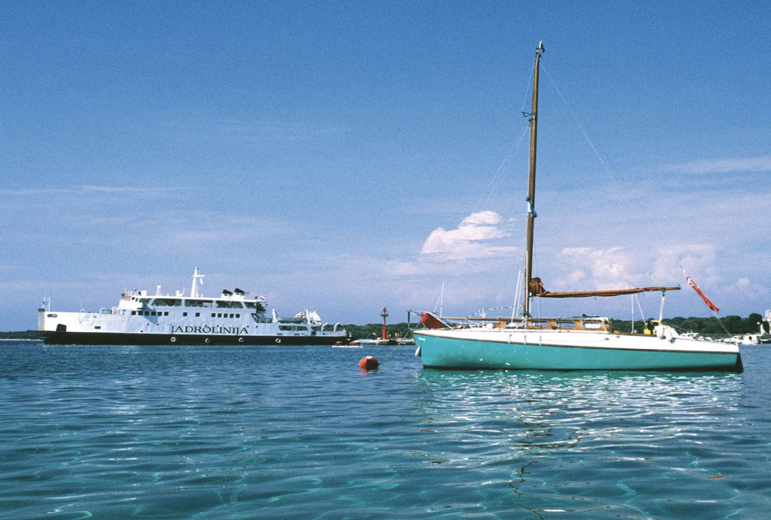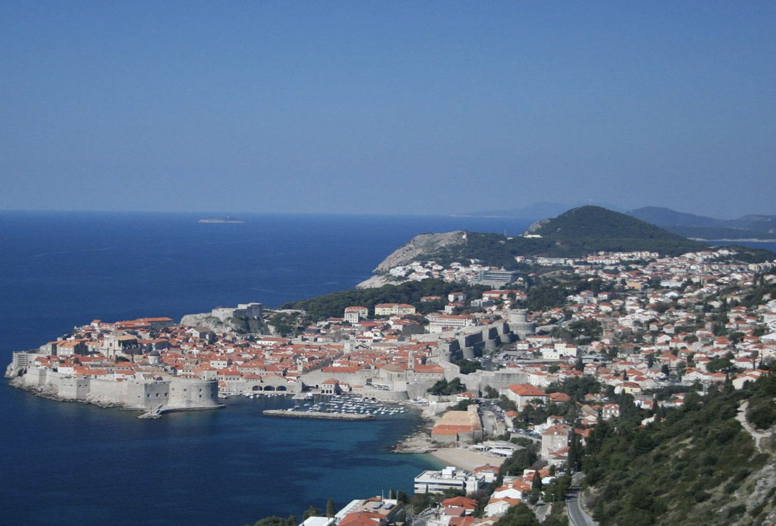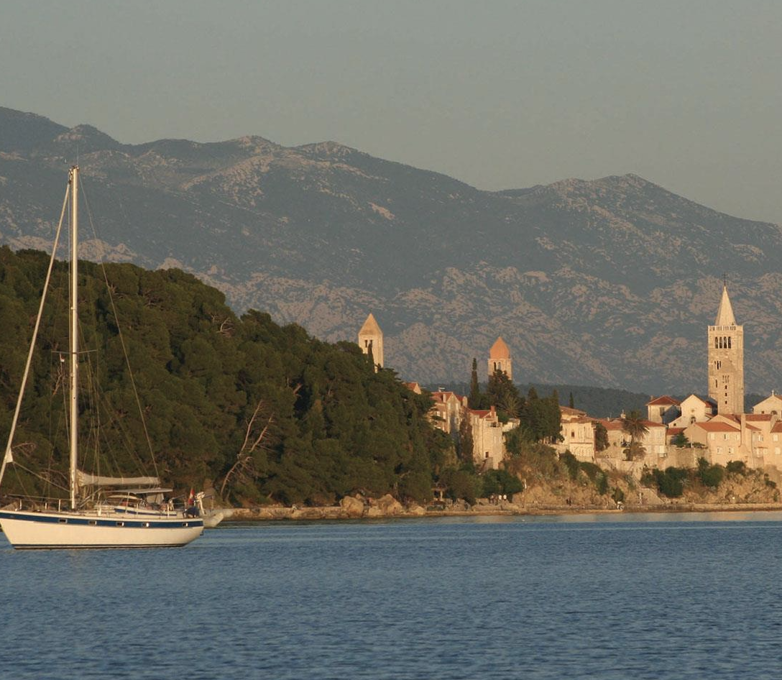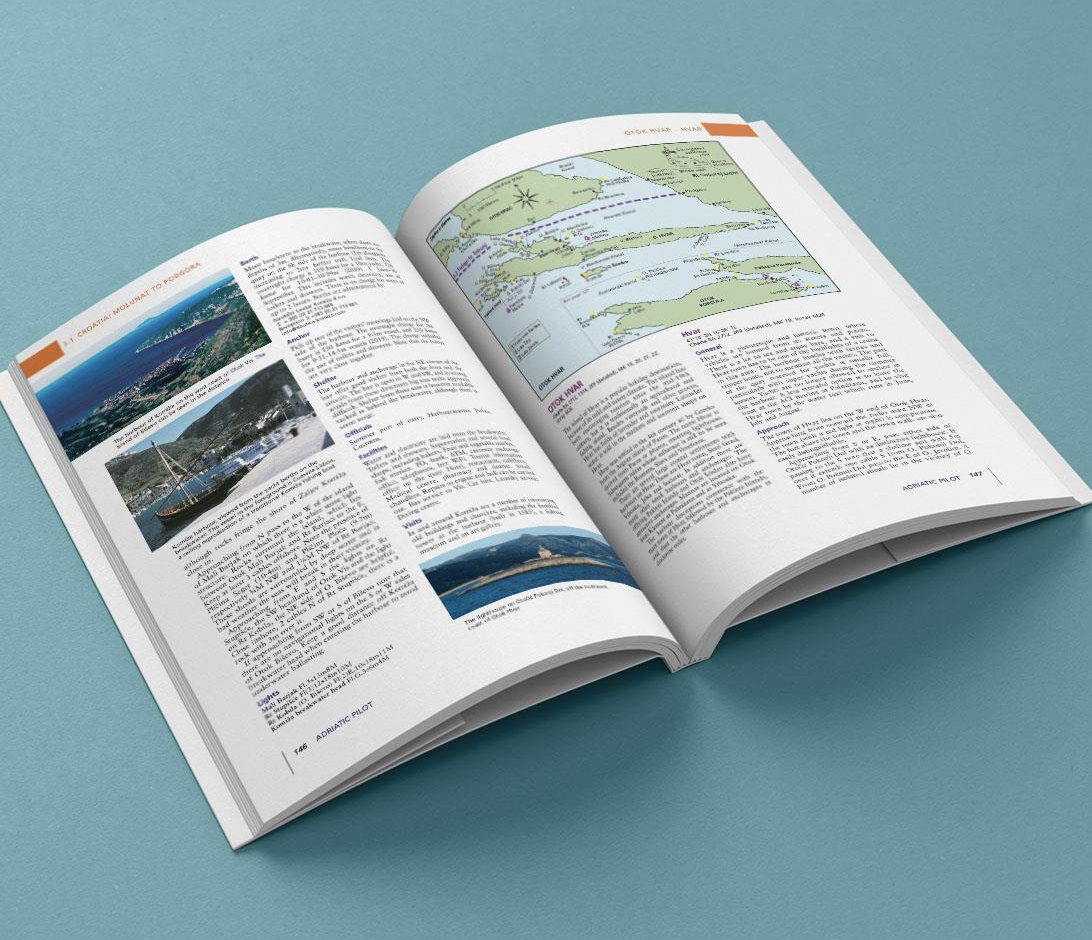Featured book
Adriatic Pilot
In this month’s Imray blog we’re sharing tips to safely navigate the bora, Croatia’s gusty katabatic wind, based on information in Adriatic Pilot by Trevor and Dinah Thompson.
Croatia and the Dalmatian Islands are a splendid cruising ground forming the heart of the Adriatic. There are numerous islands to explore, countless anchorages and plenty of historic towns built around harbours. These range from the well-known towns of Dubrovnik and Hvar to tiny historic Venetian harbours such as Mali Ston. There are large islands, small islands, green islands such as Mljet, and bleak rocky islands such as Kornat. Don’t ignore the mainland coast which hides surprising gems such as Ston and Skradin.
“In common with the rest of the Mediterranean, the Adriatic enjoys a gentle climate. Winds are usually light or moderate, and gales are rare except in certain areas liable to the bora.”
The main seasons in the Adriatic are summer and winter. Spring and autumn are transitional periods rather than true seasons as experienced in temperate regions. These transitional periods (April/May and October) can be boisterous, lasting approximately one month and characterised by unstable weather conditions and often strong winds such as the infamous bora.

While there are always cruising yachts underway to new cruising grounds during these periods, a few days of good sailing weather may be followed by a week of strong winds and heavy seas. So, if sailing out of season expect delays and know the signs of a bora so you can take shelter…
Boreas = from the north
The bora is a cold, dry wind, which blows from the north or northeast. It is caused by cold air which has been trapped in the mountains behind the coastal belt before falling to the sea. Although it can happen in the whole Adriatic, the areas where it is felt most strongly in Croatia are Zaton Zuljana (on the south side of the Peljesac peninsula), near the mouth of the Neretva river and in Kanal Malog Stona.
“The onset of a bora is often swift without any clear warning, quickly reaching gale force.”
Conditions which favour a bora are high pressure to the NE of the Adriatic and low pressure over Italy. The wind often appears as a cold front passes over. Frequently a bora can be experienced in a small local area. In these circumstances it is a katabatic wind caused by air cooling over the mountains and then falling down the mountainsides towards the sea. In the winter this happens on average 20% of the time, but in the summer the frequency of bora winds drops to just 5%.
The bora in numbers
- It usually takes 3-4 hours to reach gale force winds
- Gales can last 12 hours (max. 24 hours)
- It usually takes 2 days for settled weather to return (max. 6 days)
- Bora is strongest where mountains >600m are <3km from the coast
By its nature, the bora is strongest near the coast, particularly at the mouths of valleys that funnel the wind. Unlike other winds, which tend to blow horizontally, the bora blows ‘downhill’ in violent gusts. Although clear weather is normally associated with the bora (in the case of a White Bora), there may be squalls, rain or snow at its onset occasioned by the passage of a cold front (known as a Black Bora). A violent bora creates so much spray at sea that visibility can be severely affected.

Summary
As far as yachts are concerned, the greatest danger lies in a false sense of security caused by continuous good weather. The trick to safely sailing in Croatia is therefore to keep a daily check on the forecast and if you see the signs of a bora coming, head to a safe harbour immediately or book a berth in a marina sheltered from the north and north-easterly winds. Don’t leave it last minute as Croatia gets incredibly busy in the summer and you may not be able to find a berth.
Finally, don’t let the bora put you off cruising in Croatia! This is one of Europe’s best sailing destinations and many people don’t experience it at all when they’re there - but it is better to be informed than ignorant. Simply keep an eye on the weather and make sure you’re in a safe haven when the bora arrives, taking the opportunity to explore ashore until the winds pass.
Quickly find secure harbours and anchorages in Croatia in Adriatic Pilot


